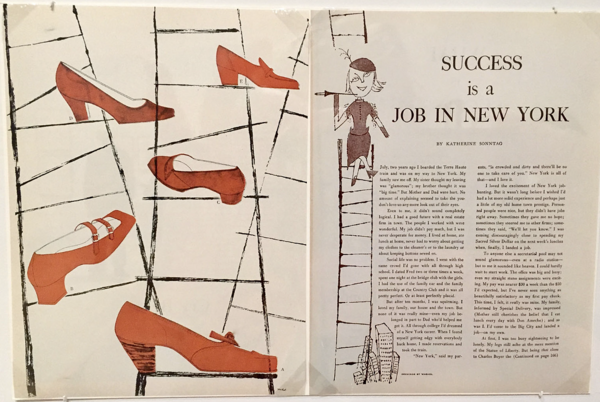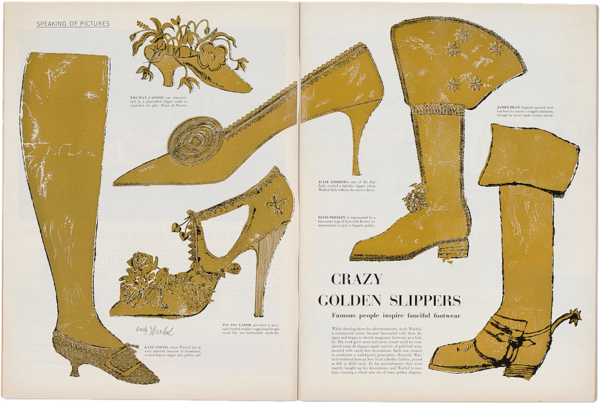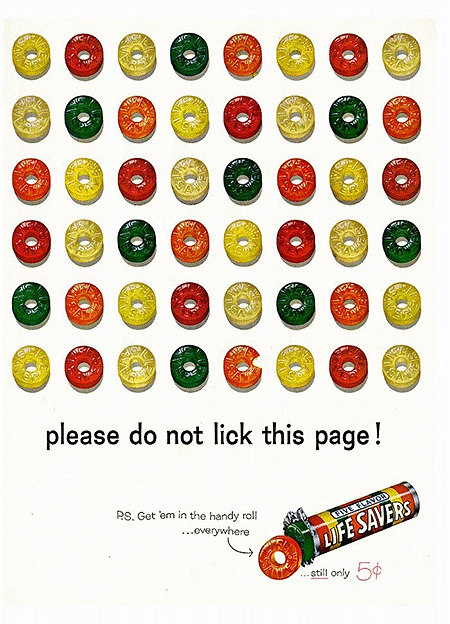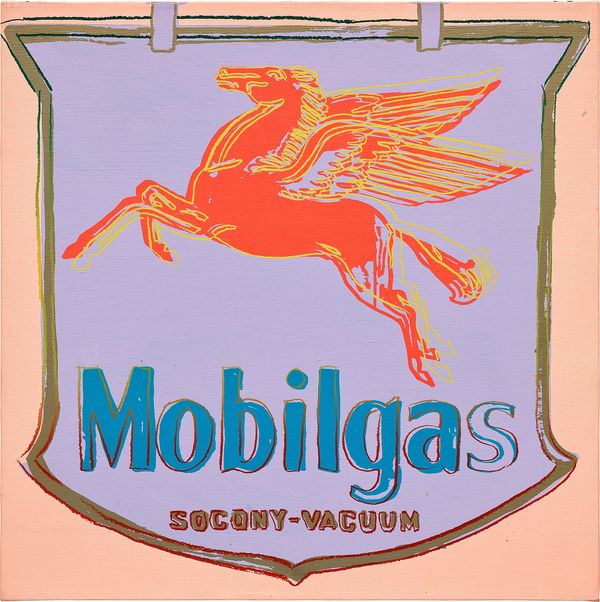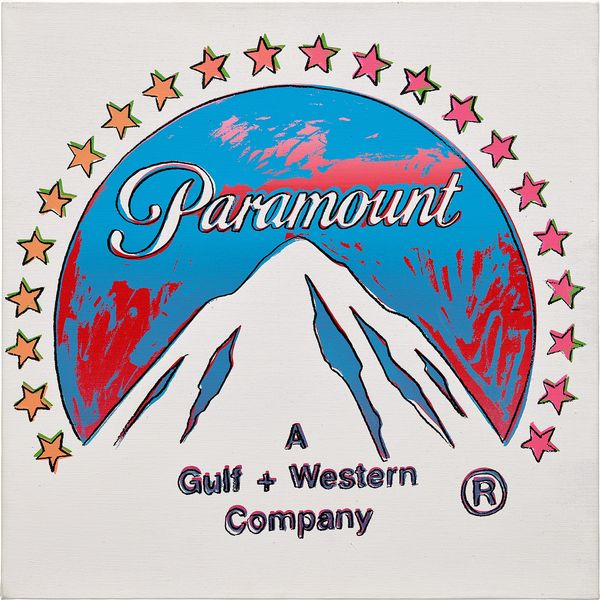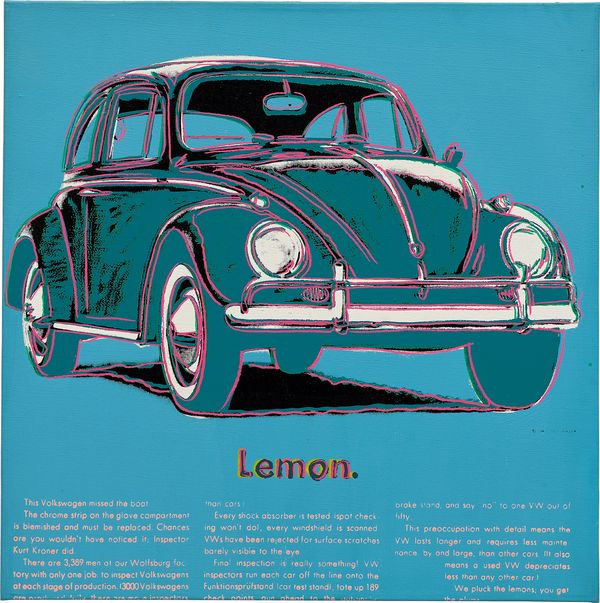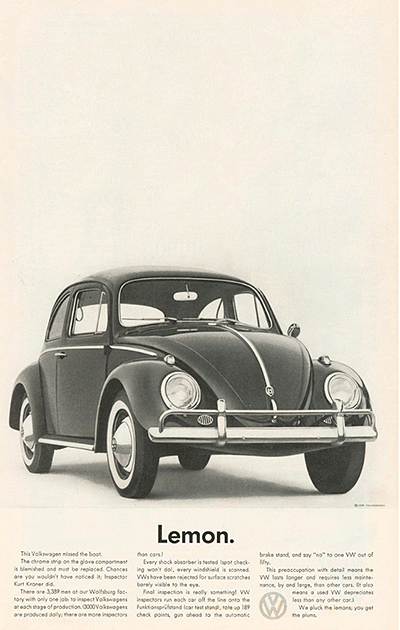Andy Warhol, Life Savers from the series Ads ,1985
Estimate HK$4,500,000 - 6,500,000
20th Century & Contemporary Art Evening Sale, 30 March
Written by Paul Laster
Pop Art’s Andy Warhol is one of the most famous contemporary artist of our times, but his creative career actually began as an illustrator of advertisement and editorial images for magazines, records and books.
Born Andrew Warhola Jr. in Pittsburgh in 1928, he was the third child of Slovakian immigrants. Taking an interest in art in primary school in Pittsburgh, he went on to study commercial art and received a BFA in pictorial design in 1949 from the Carnegie Institute of Technology, where he learned the blotted-line technique for creating illustrations, a practice that would bring him early success in New York.
Relocating to New York after college, he dropped the “a” from his name and began a career in magazine illustration and advertising. His first assignment was to draw illustrations for a Glamour magazine story called Success is a Job in New York. In the double page spread, he illustrated an assortment of women’s shoes balanced on the rungs of a ladder on the left and a climbing woman reaching the top of a ladder on the right, with a headline that read, “Success is a Job in New York”—which was an ironic way for the young artist to get his start in New York.
Andy Warhol’s first illustration assignment for Glamour magazine.
Image courtesy of Glamour Magazine
Warhol’s second illustration job in the city—a promotional advertisement for a CBS radio show—won him a coveted Art Directors Club Medal for Newspaper Advertising Art, his first of many awards from the prestigious commercial arts organization. Working as a freelance illustrator throughout the 1950s, he perfected his blotted-line drawing technique through an endless series of whimsical works for Tiffany & Co., I. Miller Shoes, Bonwit Teller, Vogue, Harper’s Bazaar, Mademoiselle, and Columbia Records, amongst other businesses and publications.
The artist did his first celebrity portrait during this period, creating a cover illustration of Count Basie for his 1955 album, but his primary client in the last half of the decade was I. Miller, a women’s shoe company dating back to 1901, which was being rebranded right at the time that Warhol started working with it. Creating more than 2000 advertisements for the company, his illustrations graced the pages of the premiere magazines of the day and were published weekly in the Sunday edition of The New York Times.
Warhol became so popular for his I. Miller show ads that the publication Women’s Wear Daily dubbed him the “Leonardo of the Show Trade” and Life magazine featured his drawings of gold leaf ornamented slippers, which symbolized different celebrities, in an article about his 1956 solo show at a New York gallery. By working with prestigious brands and publications, he learned that he could benefit from an association with notable names—a lesson he would later apply when making his first Pop Art paintings of products like Campbell Soup and Coca-Cola and such celebrities as Marilyn Monroe, Elvis Presley, and Elizabeth Taylor.
Andy Warhol, Crazy Gold Slippers, Life Magazine, 1957.
Image courtesy of Life Magazine
Although his show of ornate shoes—what Life magazine called his “Crazy Golden Slippers”—was his most successful exhibition of the 1950s, Warhol presented a number of solo gallery shows throughout his commercial art period and—never really leaving that realm—he continued to collaborate with brands even after he became a highly successful artist in the contemporary art world. Thus, when Warhol revisited the domain of advertisements and brands with his 1985 Ad series of paintings and prints, which he produced just two years prior to his death, the aging artist was basically returning to his roots.
Fresh off a collaboration with Francesco Clemente and in the moment of making his famous paintings with Jean-Michel Basquiat, Warhol—known by then as “The Pope of Pop”—created a lively series of works appropriating the ads and images from iconic companies and characters—both old and new. Perhaps motivated by working with the younger Basquiat, who was in his early 20s, or by longing for his own youthful days in New York, when a pounding ambition was his driving force, Warhol took a fresh look at a realm that he truly relished.
Andy Warhol Life Savers from the series Ads ,1985
Estimate HK$4,500,000 - 6,500,000
20th Century & Contemporary Art Evening Sale, 30 March
Vintage Life Saver, 1950s. Magazine advertisement
In his 1985 painting Lifesaver, which is featured—along with three other paintings, Mobilgas, Paramount, and Untitled (Volkswagen Lemon), from the series—in Phillips Hong Kong’s upcoming 20th Century & Contemporary Art Evening Sale, Warhol nostalgically appropriated a 1950s advertisement for the popular, colorful candy. The ad teasingly states, “please do not lick this page!,” which now ironically puts Warhol’s accessible painting in the same desirable place in the thoughts of the viewer.
Andy Warhol ,Mobilgas from the series Ad,1985
Estimate HK$3,000,000 - 5,000,000
20th Century & Contemporary Art Evening Sale, 30 March
The artist’s Mobilgas painting takes a vintage, 1940s Socony-Vacuum Mobilgas shield with its magnificent Pegasus logo as its point of departure. A reference to a popular brand in America’s Northeast when the artist was coming of age, its winged stallion imagery dates back to Greek mythology, but Pegasus was also the name of a popular Pittsburgh lounge that played an activist role in fighting AIDS in the 1980s, so the reference may be double-edged. The flying Pegasus horse, painted black and spewing fire from its mouth, also makes an active appearance in the 1984 Andy Warhol and Jean-Michel Basquiat collaborative painting Amoco.
Warhol also silkscreened the logo for Paramount Pictures on a few of his collaborations with Basquiat and hand-painted it on another one. The oldest surviving film studio in the world, Paramount was one of the major studios during the Golden Age of Hollywood, when Warhol was a youth. At the time, Warhol’s friend Jon Gould was an executive at the movie studio, which would have made the it and the pictures being produced there a continuous topic of conversation for the artist.
Andy Warhol, Paramount from the series Ad, 1985
Estimate HK$3,000,000 - 5,000,000
20th Century & Contemporary Art Evening Sale, 30 March
The logo that Warhol used in his Ad series painting, titled Paramount, features a drawing of a mountain (allegedly based on a 1920s doodle by the company’s co-founder) surrounded by 22 stars, which originally represented the number of actors (24 in the initial version) working for the studio. The name Paramount appears in script above the mountain peak, while A Gulf + Western Company, which was the American conglomerate that owned the studio from 1966 to 1989, is purposely printed slightly off-register (a typical Warhol style) below.
Andy Warhol, Untitled (Volkswagen Lemon) from the series Ads,1985
Estimate HK$4,000,000 - 6,000,000
20th Century & Contemporary Art Evening Sale, 30 March
Vintage Volkswagen ad, 1960-68
Finally, the artist’s Untitled (Volkswagen Lemon) references what is said to be one of the cleverest advertising campaigns of the postwar period. However, besides alluding to one of the most popular cars for bohemians and the impoverished in the artist’s early period of struggle, when any number of his friends may have owned a Volkswagen Beetle, the word Lemon seems to be of equal importance in this picture. Bullied in school because of a childhood illness that caused a skin discoloration, Warhol may have considered himself a lemon, or he may have thought of himself as a lemon due to the difficult circumstances of growing up without a father, who passed when he was just 13 years old. But as the proverb goes, “When life gives you lemons, make lemonade,” which is exactly what the ambitious young artist eventually did.
20th Century & Contemporary Art Day Sale
Hong Kong 31 March 2023

